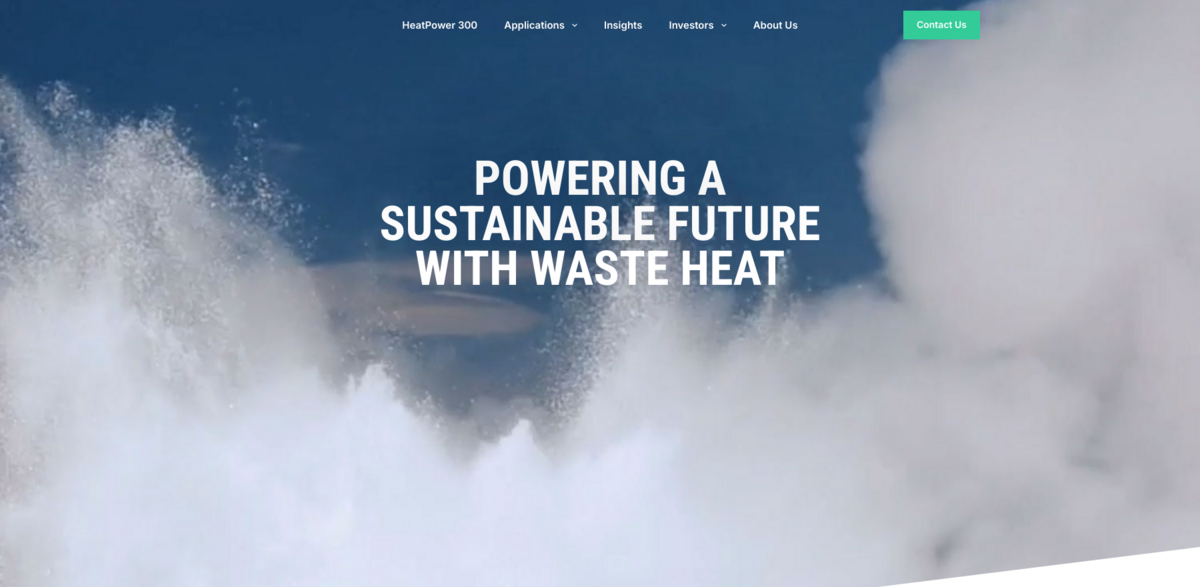Climeon HeatPower 300: Turning Low-Temperature Waste Heat into Power
Climeon HeatPower 300 is an innovative, fully autonomous Organic Rankine Cycle (ORC) system designed to generate electricity efficiently from low-temperature heat sources starting at just 75°C. This modular marvel produces up to 355 kW per unit and can be scaled up with multiple units for even greater power output. It’s a smart, cost-effective solution that not only cuts energy costs but also helps industries shrink their carbon footprints. By tapping into waste heat that would otherwise go unused, Climeon’s technology optimizes energy efficiency and supports long-term sustainability goals.
Main Benefits of the HeatPower 300 System
Here’s a quick snapshot of what makes the HeatPower 300 stand out:
- Net power output ranges from 50 to 355 kW
- Thermal power absorbed between 1000 and 4500 kW
- Uses environmentally friendly, non-toxic, and non-flammable working media
- Compact dimensions: 5.8 x 2.4 x 2.8 meters (L x W x H)
- Dry operating weight: 15,000 kg (16,700 kg in operation)
- Compatible with mains connection of 380-480 or 690 VAC, 50/60 Hz
- Equipped with a PLC control system and MODBUS TCP for seamless integration
NEO GROUP: Industrial Waste Heat Recovery in Lithuania
At its PET and Polyol manufacturing plant in Lithuania, NEO GROUP is turning waste heat from resin production into sustainable electricity using Climeon’s HeatPower 300. This project not only slashes energy costs but also aligns with Lithuania’s ambitious goal of carbon neutrality by 2050. The system taps into condensed process steam as its heat source and uses cooling towers to manage the cooling process. Since going live in 2024, it’s been a game-changer for NEO GROUP’s sustainability efforts.
Havila Voyages: Greener Cruising with HeatPower Technology
Norwegian cruise line Havila Voyages has embraced Climeon’s HeatPower technology to boost energy efficiency across four new passenger ships—Havila Capella, Havila Castor, Havila Polaris, and Havila Pollux. Built by Tersan shipyard in Turkey, the first two vessels were retrofitted with the system after delivery in Norway, while the latter two were fitted during construction. Each ship’s HeatPower 150 system generates 150 kW by recovering heat from engine cooling water and exhaust gases, with seawater serving as the cooling source. This initiative highlights how maritime industries can sail toward sustainability without compromising performance.
Kopsvatn Power Plant: Harnessing Iceland’s Geothermal Potential
Located near Flúdir in southeast Iceland, the Kopsvatn Power Plant taps into the region’s abundant geothermal heat, primarily used for district heating and greenhouses. Construction kicked off in May 2018, with commissioning completed by March 2019. Thanks to upgrades in 2020, including a new pump and improved cooling solutions, the plant now boasts a production capacity of 1.2 MW. The electricity generated feeds the local grid, while leftover heat supports the district heating network. This binary geothermal power plant is a prime example of combining clean energy production with community benefits.
Project Impact: Aligning with Sustainable Development Goals (SDGs)
- SDG 7: Affordable and Clean Energy – Promoting access to sustainable energy sources
- SDG 9: Industry, Innovation, and Infrastructure – Encouraging sustainable industrialization and innovation
- SDG 11: Sustainable Cities and Communities – Supporting resilient infrastructure and sustainable urban development
- SDG 12: Responsible Consumption and Production – Enhancing resource efficiency and waste reduction
- SDG 13: Climate Action – Reducing greenhouse gas emissions and combating climate change
Why Waste Heat Recovery Matters for a Net-Zero Future
Waste heat recovery isn’t just a nifty tech trick—it’s a vital piece of the renewable energy puzzle. Unlike solar or wind, it’s not weather-dependent, which means it can provide a steady, reliable source of green energy around the clock. By converting low-temperature waste heat into clean electricity, Climeon’s HeatPower systems help diversify the renewable energy mix, making it more resilient and robust. As industries worldwide push toward net-zero emissions, technologies like this are crucial for unlocking hidden energy potential and driving sustainable growth.





















